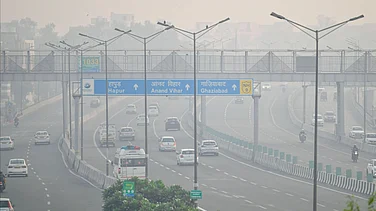
India launches $1.5 billion NASA-ISRO NISAR satellite, the first dual-frequency radar mission to map Earth’s surface with centimeter-level accuracy.
NISAR provides free global data to monitor glacier retreat, land deformation and disaster-prone zones to assist environmental research and emergency planning worldwide.
High-resolution soil moisture mapping supports precision agriculture, helping manage droughts, optimise irrigation and secure food systems in vulnerable regions.
India launched a $1.5 billion, first-of-its-kind radar imaging satellite on July 30 which is built in collaboration with NASA. The satellite has been deployed to help enhance global monitoring of climate change and natural disasters.
The NASA-ISRO Synthetic Aperture Radar, or NISAR satellite, is the first such collaboration between the Indian Space Research Organisation and US space agency NASA, reported Reuters.
The satellite took off from India's Satish Dhawan Space Centre at 5:40 pm (1210 GMT) atop a medium-lift rocket. This marks a new initiative in space cooperation and strengthens India's profile in low-cost, high-impact satellite missions.
What is NISAR?
NISAR is the world's first radar imaging satellite to use two radar frequencies - the L-band provided by NASA and the S-band developed by ISRO - to track minute changes in the Earth's surface, including movements as small as a centimetre, the space agencies have said.
The 2,393-kg satellite was inserted into a 747-kilometre Sun-synchronous orbit above Earth. It will map the planet every 12 days using a 240-km-wide radar swath, offering data to scientists and disaster response agencies to monitor everything from glacier retreat in the Himalayas to potential landslide zones in South America.
"The potential applications from the satellite are huge, and the global scientific community is eagerly awaiting the satellite data for their respective research and usage," ISRO Chairman V. Narayanan said after the launch.
"It is not going to be used by one or two countries. The entire globe is going to benefit from this great accomplishment," he said, adding that the mission had brought the two space agencies much closer than ever before.
NISAR is expected to operate for at least five years. The data it collects will be made freely available to users worldwide — a move aimed at enhancing transparency and accessibility in environmental research and hazard response.
Tool for Ensuring Food Security
NISAR’s centimeter‑level radar imaging will also assist precision agriculture by enabling soil moisture mapping, crop health monitoring and drought forecasting.
The soil moisture data could inform agriculture and water managers about how croplands respond to heatwaves or droughts, along with the pace at which they absorb water and dry out following rain—providing information that could support irrigation planning.
“Resource managers thinking about food security and where resources need to go are going to be able to use this sort of data to have a holistic view of their whole region,” said Rowena Lohman, an Earth sciences researcher at Cornell University in Ithaca, New York, and soil moisture lead on the NISAR science team.




























